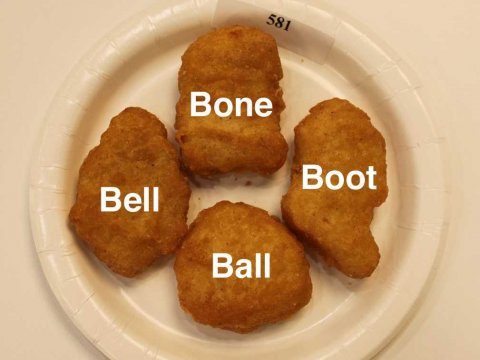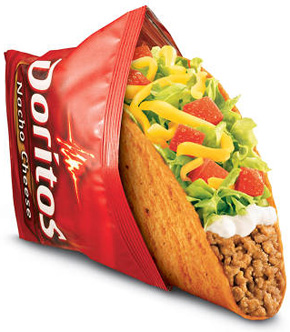Pixel City
Oh look, another blog about design and technology.
How to Design a TV Show
OK, that's not really what this article is about, but the design stuff is my favorite part.
Siskel and Ebert had switched to sitting in movie theater seats—slightly angled, 18 inches apart—to a mock balcony, a kind of belvedere from which they could surveil all of moviedom. This created a narrative frame for the reviews. They were critics playing moviegoers, who discussed films as they were shown to them; it gave the show its sitcom quality, which became a central part of its appeal... In order to sustain the illusion, Siskel and Ebert would turn their heads in the direction of the screen after introducing a clip, as though they were watching it alongside the viewer... It read as inclusive; the camera always positioned the viewer either in a seat close to the hosts, or in an impossible spot just leaning over the balcony railing.
I totally want some of this material.
Scientists have developed a material so dark that you can't see it.
"You expect to see the hills and all you can see … it's like black, like a hole, like there's nothing there. It just looks so strange," said Ben Jensen, the firm's chief technical officer.
"Beats" Design
Congratulations to the design firm Ammunition for helping grow Beats from nothing* in 2006 to a $3 billion purchase by Apple in 2014. Never let it be said that you can't get anywhere with a stick-and-ball letter for your logo. Thanks to Ammunition for this great look into their work. (And thanks to Daring Fireball for letting me know that Ammunition exists.)
* OK, I guess they had a few million from Dre to start... but other than that — nothing. :-)
Birth of the Mall
Long and detailed (of course) story from The New Yorker about malls, by Malcom Gladwell.
Then he looked up and pointed to the second floor of the mall. The handrails were transparent. “We don’t want anything to disrupt the view,” Taubman said. If you’re walking on the first level, he explained, you have to be able, at all times, to have an unimpeded line of sight not just to the stores in front of you but also to the stores on the second level. The idea is to overcome what Taubman likes to call “threshold resistance,” which is the physical and psychological barrier that stands between a shopper and the inside of a store. “You buy something because it is available and attractive,” Taubman said. “You can’t have any obstacles.”
Designing a Taco
The inside story of the Taco Bell/Doritos marriage. The idea is pretty simple; this story is all about the execution. It's full of sweet, sincere, unintentionally hilarious lines like "To tackle this huge challenge, for months we shared know-how between the technical teams at Frito-Lay and Taco Bell" and "We had teams of engineers working day and night to get the seasoner working", but also interesting stuff like...
"When you buy a bag of Doritos and you open it, and some of the corners are broken off, you're probably not going to be that mad, because they're still Doritos," Gomez says. "But if our taco shells are broken in transit or in the restaurants, we can't do anything with them. That was a big obstacle for us. How do we make these shells chip-like, but also be able to ship them and still be able to build a taco without having them break?"
Design (and manufacturing) is all about constraints.
John Gruber...
... is lucky.
(In the sense of "Luck is when preparation meets opportunity." He's a great writer, reviewer, and analyst, and he deserves all the success he has. This is the first time he's been invited to a briefing like this.)
Sold another iPhone
Sold another iPhone.
- July 2010: Paid $299 for an iPhone 4S (+6.5% FL sales tax, +$18 AT&T upgrade fee, plus a case - got a so-so one right away for $30 or $35; the free one I got arrived a few weeks later and was better; I'm using the case for my 4S so it doesn't really count anyway.)
- January 2012: Listed on eBay for $295, sold for $300 exactly
- eBay keeps $27.70 - 9% + 0.35 + another 0.35 because I had to list twice because the first buyer flaked on me
- $300 sent to me via PayPal, they keep $9 (3%)
- $263.30 so far, plus I need to pay for shipping
Remember: when buying an iPhone, you'll pay $100 for each storage increase but you'll only see about $50 of that at resale time. If I would have had a $199 base iPhone 4, I probably would have gotten about $250.
Jon Rubinstein left HP
Jon worked at Apple once upon a time, on projects ranging from the iPod to PowerMacs, then he retired to a beach in Mexico, then he came to Palm and tried to do a Steve Jobs-like turnaround by introducing the Palm Pre. It didn't work out, then Palm was bought by HP, then HP killed Palm. Now, at the end of his agreed-upon 12-to-24-month stay with Palm following the buyout, he's gone. But he plans to come back someday to do... something.



